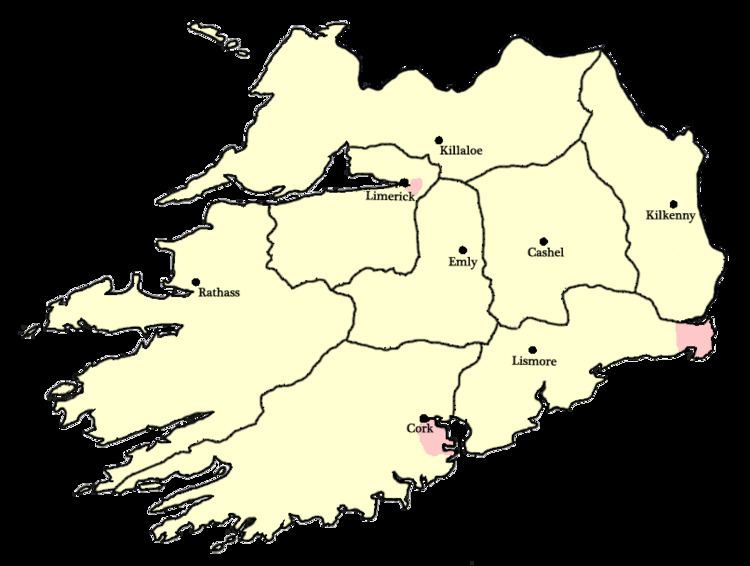 | ||
The Synod of Ráth Breasail (also known as Rathbreasail) (Irish: Sionad Ráth Bhreasail) was an Irish national church council which took place in Ireland in 1111. It marked the transition of the Irish church from a monastic to a diocesan and parish-based church. Many Irish present day dioceses trace their boundaries to decisions made at the synod.
Contents
Background
Viking raids on Ireland began around the start of the 9th century, and had a devastating effect on the Irish church. These disruptions, along with secular impositions by the invaders, produced a decline in Christian religious observance and moral standards established by Saint Patrick and other early missionaries. Apathy towards the Christian virtues increased, and by the 11th century some parts of Ireland had even returned to paganism.
Gradually, as the onslaughts of the Danes became less frequent, there was a revival of learning which prepared the way for the religious reforms of the twelfth century.
History
It was the second of four great reforming Irish synods, the other three were at Cashel (1101), Kells-Mellifont (1152) and Cashel again (1172). Rathbreasail is near Mountrath, County Laois, a suitably central place for such an important meeting, however the location of the Synod is not certain and sites in counties Armagh, Laois, Tipperary and Cork have been mooted possible locations. Ó Murchada (1999) argues in favour of a location near the townland of Clonbrassil about 4 miles south-west of Templemore, Co. Tipperary in the present-day parish of Drom & Inch.
it was convened by the papal legate, Gille, Bishop of Limerick. Gille is not mentioned in the Irish Annals, possibly because Limerick was then a Hiberno-Norse city. Its purpose was the Romanizing of the Irish Church, and, in particular, the establishment of diocesan episcopacy.
The synod was attended by no fewer than fifty bishops, three hundred priests and over three thousand laymen, including King Murtough O'Brien. There were no representatives of the provinces of Connaught and Leinster, in which as yet, it appears, the Reform movement had not yet established itself. The Synod's deliberations were prompted by the Gregorian Reform and guided by the relatively new powers of the Papacy as defined in Dictatus papae (1075–87) and Libertas ecclesiae (1079).
The Council established two provinces: Armagh and Cashel. Each province consisted of twelve territorial dioceses. The boundaries of the dioceses were only vaguely defined, however. The synod also made the See of Waterford a suffragan of the Archbishop of Cashel having previously been a Danish city subject to Canterbury.
Dioceses established
The following 24 dioceses were established by the synod:
The Diocese of Dublin acknowledged the jurisdiction of Canterbury until 1096, but was not included in the list of dioceses at the synod. It was not incorporated into the system of Irish dioceses until the Synod of Kells in 1152.
